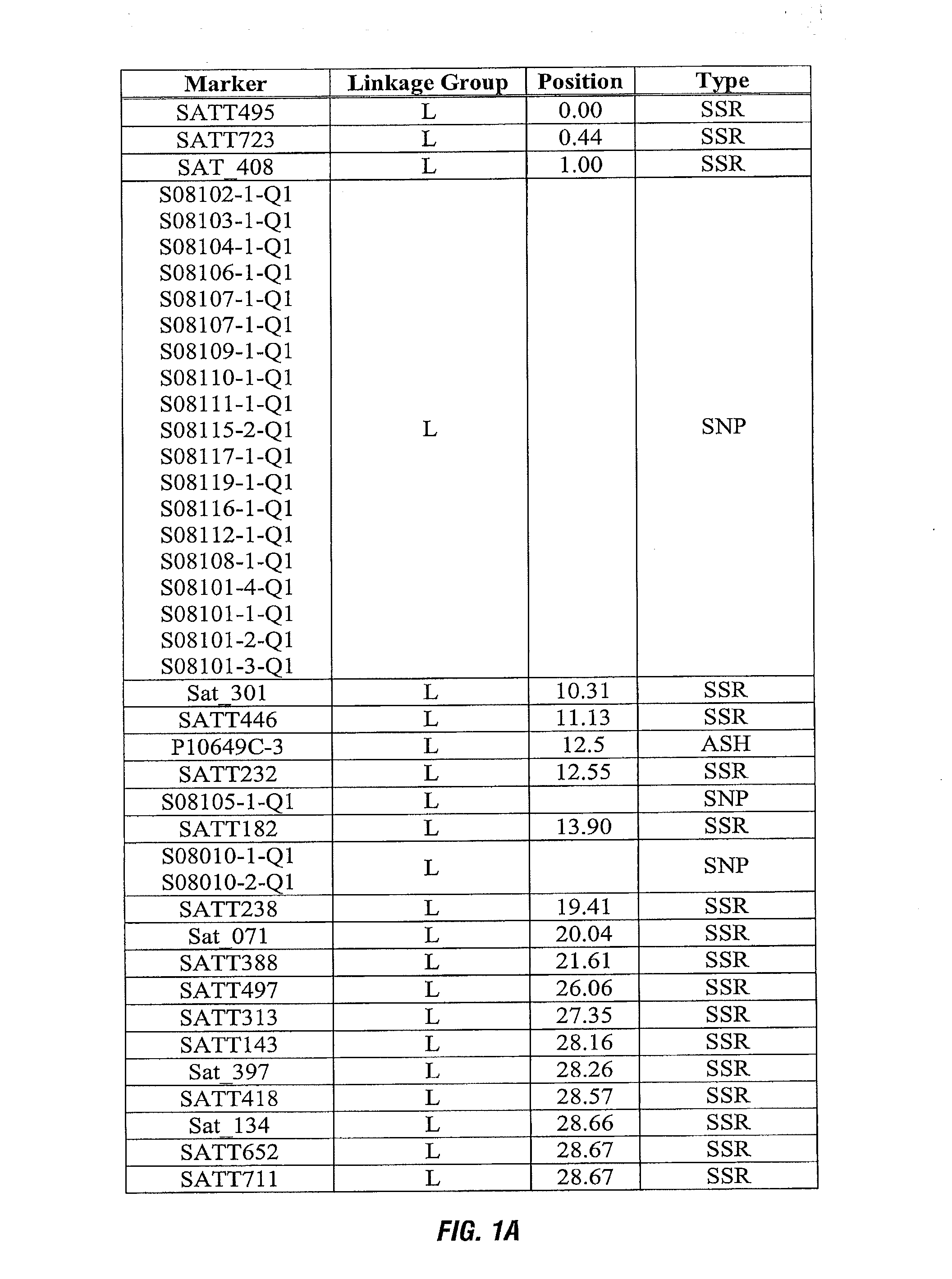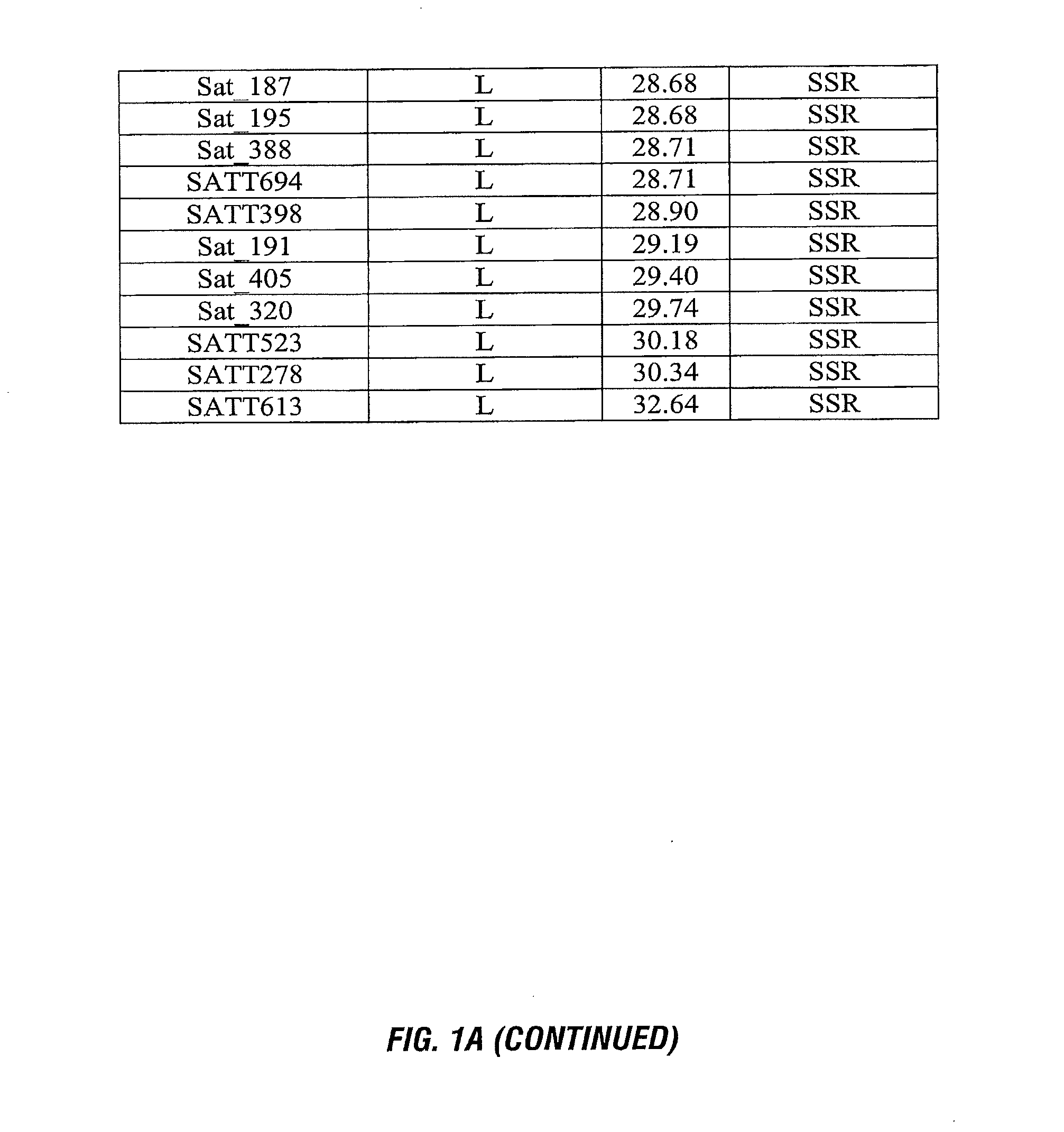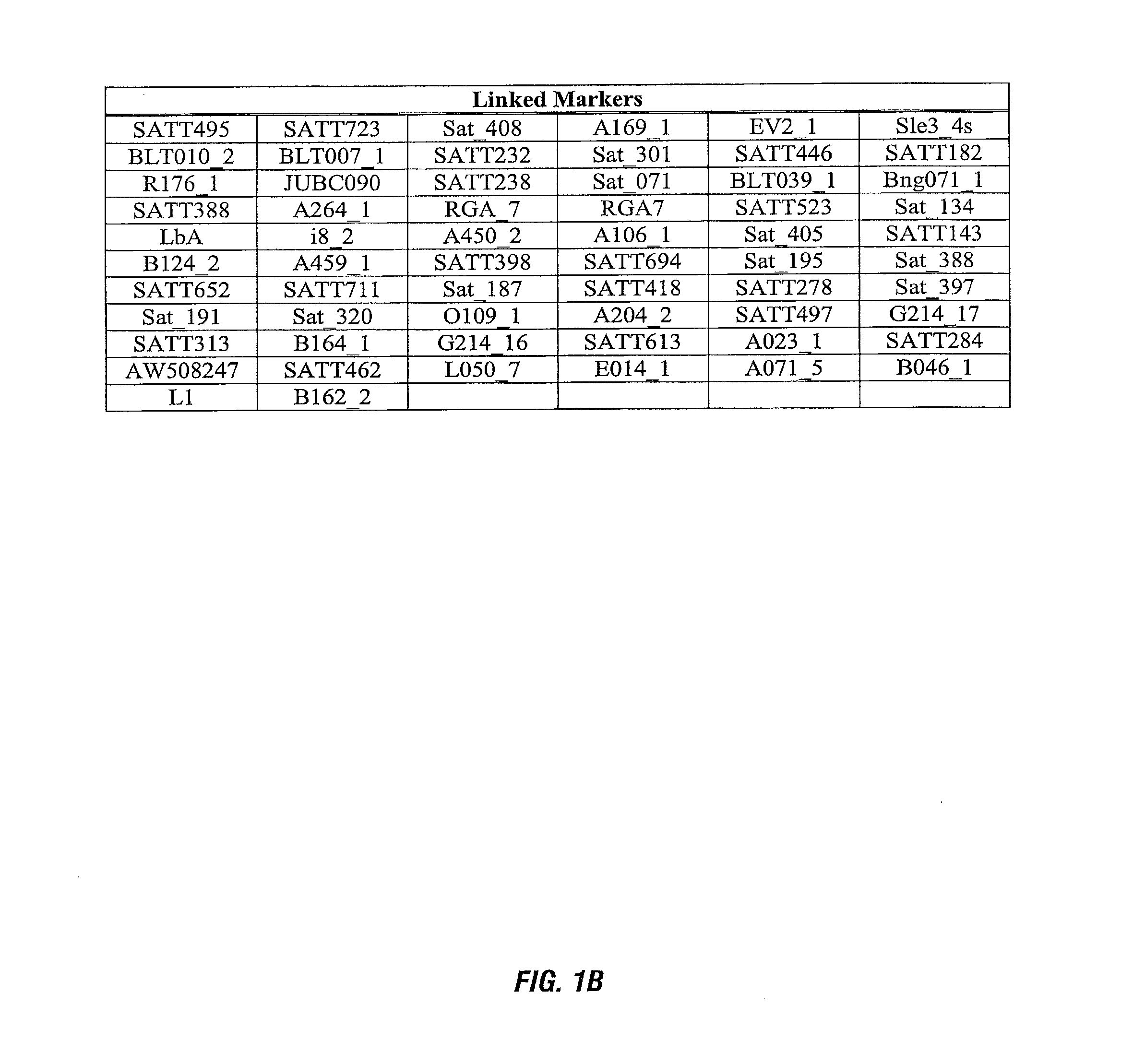Molecular markers linked to ppo inhibitor tolerance in soybeans
a technology of molecular markers and soybeans, applied in the field of molecular markers linked to soybean ppo inhibitor tolerance, can solve the problems of farmers' lower yields, and achieve the effect of negatively affecting the crop
- Summary
- Abstract
- Description
- Claims
- Application Information
AI Technical Summary
Benefits of technology
Problems solved by technology
Method used
Image
Examples
example 1
Identification of Sulfentrazone Tolerant and Sensitive Soybean Lines-Herbicide Screening Bioassay and Intergroup Association Marker Based Diagnostic
[0264]Sulfentrazone is a PPO inhibitor and is the active ingredient in Authority® herbicide. Authority® 75DF (FMC Corp., Philadelphia, Pa., USA) is a 75% active ingredient formulation of sulfentrazone containing no other active ingredients.
Part 1: Herbicide Bioassay
[0265]One hundred sixteen (116) elite soybean lines were screened for sulfentrazone tolerance using the following protocol. Seed of soybean varieties with adequate seed quality, having greater than 85% warm germination were used.
Design and Replication:
[0266]After planting, entries were set up in a randomized complete block design, blocked by replication. Three replications per experiment were used. One or more of well established check variety were included in the experiment, such as available public sector check lines.
Non-tolerant check: Pioneer 9692, Asgrow A4715
Tolerant che...
example 2
Predication and Confirmation of Marker Based Selection for Response to PPO Chemistries in a Set of Diverse Public Soybean Lines
[0282]Marker haplotype data for a set of 17 diverse public soybean lines was determined for two QTL identified in Example 1 for Linkage Group L molecular markers P10649C-3 (approximate position 3.6) and S00224-1 (approximate position 12.0). The response of these lines to sulfentrazone herbicide was published by Hulting et al. (Soybean (Glycine max (L.) Merr.) cultivar tolerance to sulfentrazone. 2001 Science Direct, Vol. 20(8): 679-683). The phenotypic response was reported as a growth reduction index: plant height and visual injury as expressed as a percentage of check plot of each cultivar. Data for the marker haplotype on Linkage Group L and the herbicide bioassay results are presented in Table 3. Use of the molecular diagnostic P10649C-3 (linked QTL on Linkage Group L, approximate position 3.6) for this set of phentoyped soybean lines is 92% predictive o...
example 3
Predication and Confirmation of Marker Based Selection for Response to PPO Chemistries in a Set of Soybean Commercial Lines
[0284]Haplotype data for a set of 7 commercial soybean lines was determined for two QTL identified in the previous example for Linkage Group L molecular markers P10649C-3 (position 3.6) and S00224-1 (position 12.0). The response of these lines to sulfentrazone herbicide was determined by method used in Example 1. In addition, the same scale was used for scoring such that:[0285]9=Equivalent or better when compared to the tolerant check[0286]7=Very little damage or response noted.[0287]5=Intermediate response or damage[0288]3=Major damage, including stunting and foliar necrosis[0289]1=Severe damage, including severe stunting and necrosis; equivalent or worse when compared to the non-tolerant check
Data for the marker haplotype on Linkage Group L and the herbicide bioassay results are presented in Table 5. Use of either / both of these markers for this set of phentoyp...
PUM
| Property | Measurement | Unit |
|---|---|---|
| pH | aaaaa | aaaaa |
| volume | aaaaa | aaaaa |
| nucleic acid markers | aaaaa | aaaaa |
Abstract
Description
Claims
Application Information
 Login to View More
Login to View More - R&D
- Intellectual Property
- Life Sciences
- Materials
- Tech Scout
- Unparalleled Data Quality
- Higher Quality Content
- 60% Fewer Hallucinations
Browse by: Latest US Patents, China's latest patents, Technical Efficacy Thesaurus, Application Domain, Technology Topic, Popular Technical Reports.
© 2025 PatSnap. All rights reserved.Legal|Privacy policy|Modern Slavery Act Transparency Statement|Sitemap|About US| Contact US: help@patsnap.com



